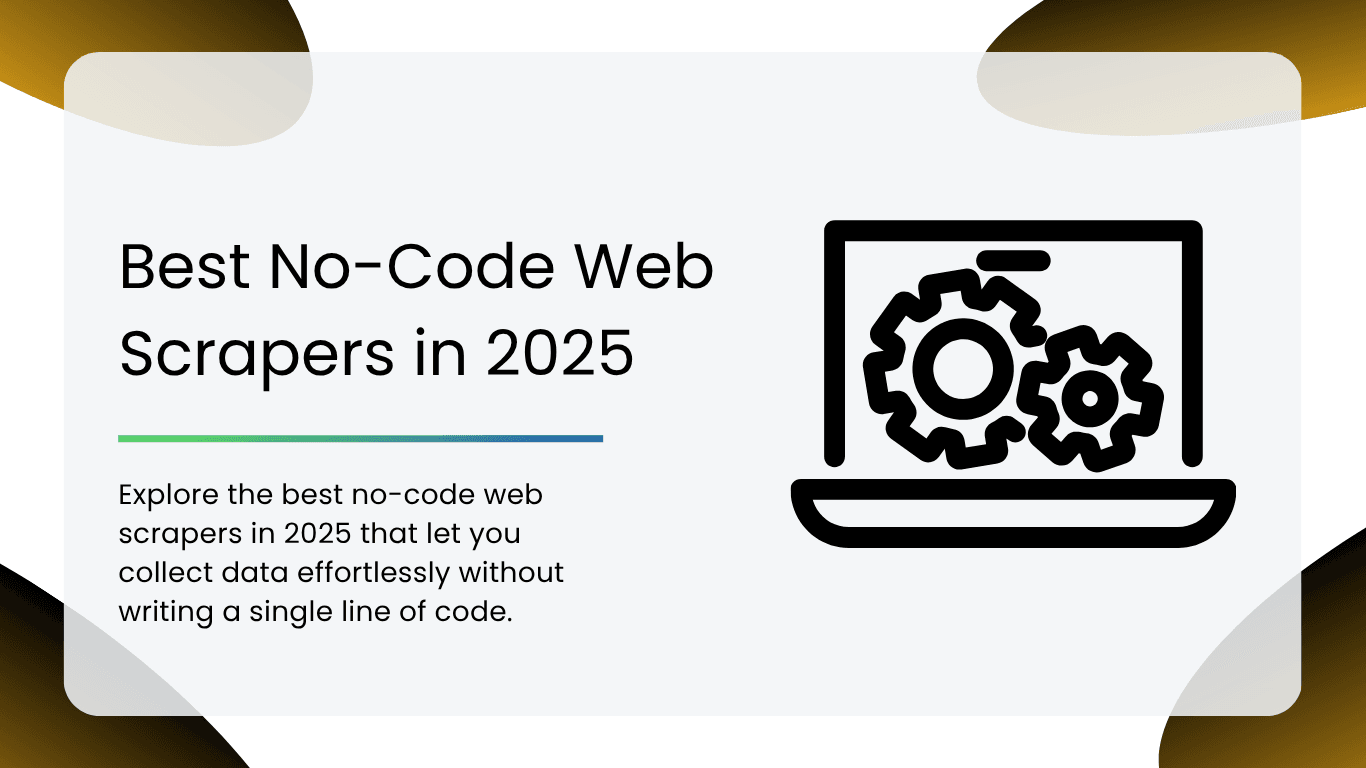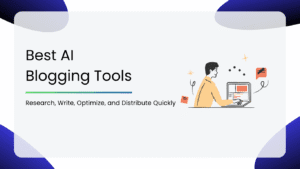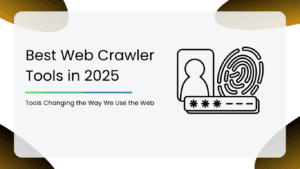Collecting data from websites used to require programming skills and complex tools.
Now, no-code web scrapers make this process simple and accessible to almost anyone.
These tools allow users to gather useful information through easy visual steps without writing a single line of code. Whether you’re a marketer, researcher, or small business owner, no-code scrapers open up new opportunities for faster decision-making and better insights.
As online data grows, having simple, efficient ways to capture it becomes more essential every day.
What is a No-Code Web Scraper?
A no-code web scraper is a tool that extracts data from websites by letting users select what they want visually.
Instead of coding, users work with clicks, drags, or templates, while the tool handles the behind-the-scenes technical details like navigating pages, parsing data, and dealing with protections.
These scrapers help people get structured, ready-to-use data without needing programming knowledge. They expand access to web data beyond developers, making information gathering faster and easier.
Why No-Code Web Scraping is Essential?
No-code tools remove the tech barrier that kept data scraping limited to programmers. They speed up web data collection and reduce the risk of errors from manual copying.
Making scraping available to more people drives smarter business moves and research by enabling rapid access to fresh data. It also lowers costs since you don’t need to hire developers or learn software coding.
These tools let teams focus more on what to do with data and less on how to get it.
Factors to Consider Before Choosing a No-Code Scraper
- Ease of Use and Visual Workflow: The tool should have a clear, intuitive interface that matches your comfort level with technology.
- Support for Modern Web Features: Ensure it handles sites with JavaScript, AJAX, infinite scroll, and other dynamic content.
- Flexible Data Export and Integration: Look for multiple export options like CSV, JSON, and connection abilities to your other apps.
- Automation and Scheduling Features: Choose a tool that runs tasks automatically on a schedule to keep your data updated.
- Ongoing Support and Update: Pick providers that offer reliable help and keep their tools current with web changes.
Table of Contents
| 1. Firecrawl |
| 2. Octoparse |
| 3. ParseHub |
| 4. Apify |
| 5. WebAutomation.io |
| 6. Magical |
| 7. WebScraper.io |
| 8. Import.io |
Best No-Code Web Scrapers in 2025
1. Firecrawl
Firecrawl is designed for developers and AI teams who want clean and organized data from complex websites. It uses artificial intelligence to turn web pages into simple formats like markdown or JSON that work well with AI. This tool works quietly in the background, taking care of tricky pages with lots of JavaScript and single-page apps. It handles proxies and page loads so users get accurate data fast. Firecrawl is best suited for those comfortable with APIs and looking to feed web data directly into AI or data tools.

Key Features
- AI-Driven Extraction: Uses AI and natural language to pick out important data from pages.
- Dynamic Content Support: Works well with pages that load content dynamically using JavaScript.
- Intelligent Page Loading: Waits until all parts of a page fully load to get complete data.
- Proxy Rotation & Retry: Manages IP changes and retries failed requests automatically.
- Developer-Friendly API: Offers API’s and SDKs to help developers connect and control data flows.
Pros
- Makes data ready for AI without extra cleanup.
- Handles modern, interactive websites with ease.
- Fast and reliable for developer pipelines.
- Affordable plans for small-scale users.
Cons
- Not designed for those without some coding knowledge.
- Lacks visual tools for easy setup.
- Smaller community and fewer plug-ins right now.
2. Octoparse
Octoparse helps people who don’t know how to code scrape websites by using an easy point-and-click system. It works in the cloud, running scraping jobs anytime you want. It can handle complicated features like endless scrolling and CAPTCHA. This tool is great for business users or researchers who want to automate data collection without writing code.
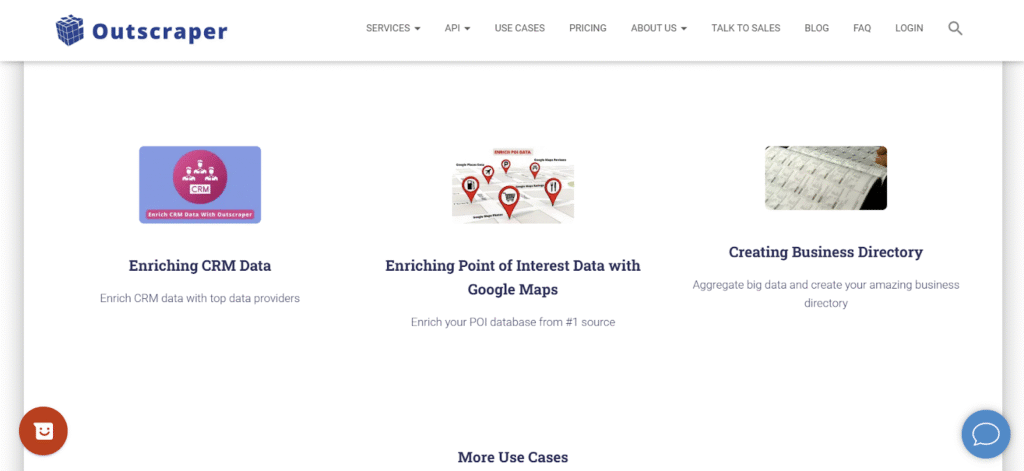
Key Features
- Drag-and-Drop Workflow: Create scraping tasks by clicking and dragging without programming.
- Cloud-Based Automation: Run scraping jobs in the cloud at scheduled times all day and night.
- Advanced Site Handling: Supports AJAX, infinite scroll, and CAPTCHA to scrape tricky sites.
- Multi-Format Export: Export data in many formats and connect via API.
- Templates Library: Uses ready-made templates for popular websites to speed setup.
Pros
- Easy for beginners to use with no coding needed.
- Can automate data gathering on tough sites.
- Lots of templates to get started quickly.
- Exports to common file types and integrates with other apps.
Cons
- Costs more if you need advanced features.
- Takes time to master all options.
- Support response depends on your plan.
3. ParseHub
ParseHub is a visual web scraper you can use in your browser. You pick data with clicks, not code. It stores info safely online and allows scheduled scraping. It works with sites that use JavaScript and interactive features. It’s a good option if you want an easy way to collect web data without a complex setup.
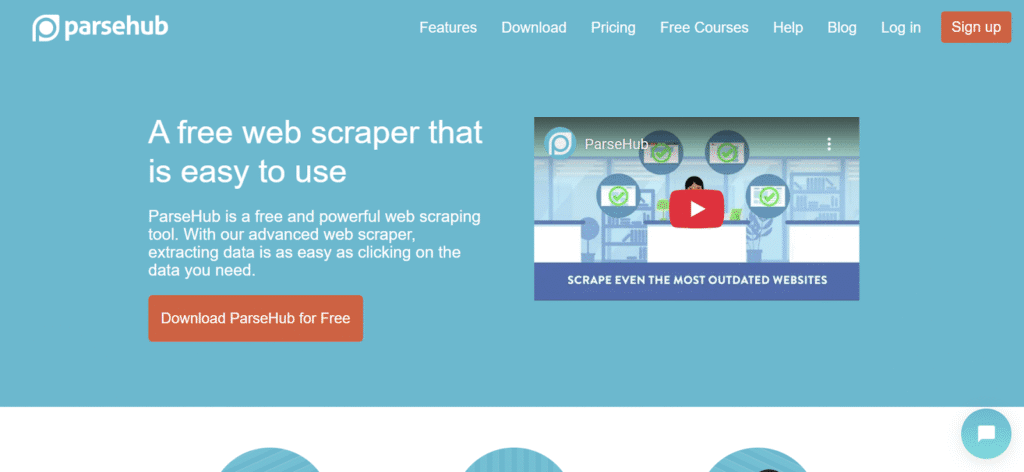
Key Features
- Visual Data Selector: Pick what you want simply by clicking on the webpage.
- Cloud Storage & Scheduling: Keep data in the cloud and run scraping jobs on a schedule.
- IP Rotation: Change IP addresses so you don’t get blocked.
- Data Export Options: Save your data in JSON, Excel, or CSV files.
Pros
- Simple to learn and use with few technical skills.
- Works well on JavaScript-heavy sites.
- Choose flexible ways to schedule and get data.
- Cloud storage keeps your info secure and handy.
Cons
- Slower on very large or highly interactive sites.
- Not as feature-packed as some code-friendly tools.
- Interface might feel old-fashioned for regular users.
4. Apify
Apify combines no-code tools with options for coding custom scrapers. It offers a large store of ready-made scraping tools for popular sites. You can write your own scripts using JavaScript or Python. The whole system runs in the cloud with scheduling and monitoring. It fits beginners, developers, and big companies who need to scrape data on any scale.
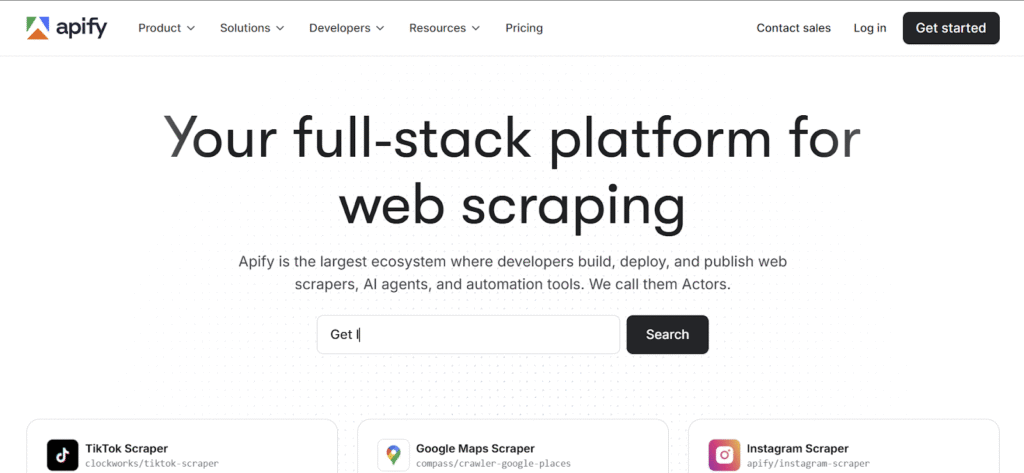
Key Features
- Ready-Made Scraper Marketplace: Choose from thousands of pre-built scraping tools called actors.
- Custom Script Support: Write your own scraping code in JavaScript or Python.
- Cloud Execution & Monitoring: Run tasks in the cloud with logs and alerts to watch progress.
- Third-Party Integrations: Connect to other tools like Google Sheets and Zapier.
- Scalable Infrastructure: Handles projects from small jobs to large enterprise crawls.
Pros
- Works well for beginners and experts alike.
- Pre-made tools speed up start times for scraping.
- Can handle very large and complicated jobs.
- Strong support and documentation for users.
Cons
- The user interface can be overwhelming when new.
- Costs can add up with credit-based pricing.
- Coding is needed for advanced features and setup.
5. WebAutomation.io
WebAutomation.io is a no-code web scraping tool designed to simplify data extraction for users without programming experience. It uses an intuitive visual editor and automation workflow to help gather data from websites quickly. The platform supports complex website structures and dynamic content while offering cloud storage and scheduling features. It is well-suited for small to medium businesses and researchers needing reliable, easy-to-use scraping without code.

Key Features
- Visual Workflow Builder: Create data extraction tasks with a simple drag-and-drop interface.
- Cloud Storage & Scheduling: Save data securely in the cloud and schedule scraping jobs easily.
- Support for Dynamic Content: Handles JavaScript and AJAX-driven website elements smoothly.
- Multi-Format Export: Export data as CSV, JSON, Excel, and more for flexibility.
- Easy Integration: Offers API access for connecting scraped data to other apps.
Pros
- Designed for users with no coding skills to start quickly.
- Automates data collection even from complex sites.
- Flexible data export options support many workflows.
- Efficient cloud scheduling for regular data updates.
Cons
- Some advanced features require learning time.
- Not ideal for very large or enterprise-level scraping.
- Customization options are limited compared to developer tools.
6. Magical
Magical focuses on rapid web data extraction with a no-code, user-friendly interface. It enables users to create scrapers quickly through point-and-click actions and automates repetitive web tasks. Its strength lies in speed and simplicity, making it a good fit for marketers, sales, and small business owners who want fast and easy access to online data.

Key Features
- Quick Visual Selector: Point and click to select data fields on any website.
- Automated Browsing Tasks: Automates routine web interactions like form filling and data submission.
- Cloud Automation: Runs scrapers in the cloud with scheduled runs and remote access.
- Data Export & API: Supports exporting to common file types with API options.
- User-Friendly Design: Geared to make scraping fast and easy for non-tech users.
Pros
- Very easy to use for those without tech skills.
- Good for quick data extraction and automation.
- Helps automate web tasks beyond scraping.
- Cloud-based runs free up local resources.
Cons
- Limited to simpler scraping tasks.
- Might not handle highly dynamic or complex websites well.
- Advanced features are less developed than competitors.
7. WebScraper.io
WebScraper.io offers a browser-based platform to build and deploy web scrapers visually. It is popular among beginners and intermediate users for its straightforward interface and cloud running capabilities. The tool supports data extraction from multi-level and JavaScript-heavy sites and provides options for scheduling and cloud hosting. It suits freelancers, small businesses, and researchers.
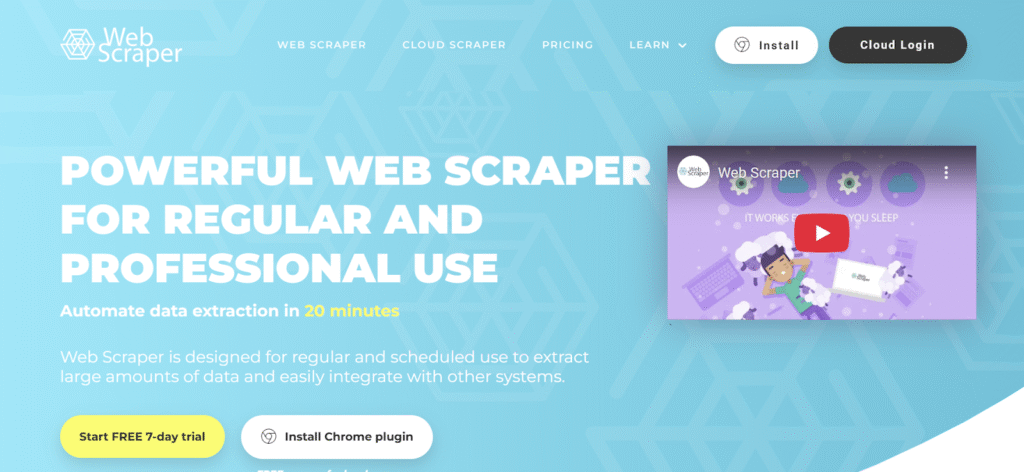
Key Features
- Browser-Based Visual Builder: Use point-and-click tools to design scraping workflows inside the browser.
- JavaScript & Multi-Level Support: Capable of scraping nested and dynamic content on modern websites.
- Cloud Hosting & Scheduling: Host scraping jobs on the cloud with automated runs.
- Multiple Data Export Options: Allows exports in CSV, Excel, JSON, etc.
- Community & Templates: Active user community sharing scraping templates and best practices.
Pros
- Easy to start for beginners with no coding required.
- Good support for JavaScript and nested data.
- Cloud running frees local resources.
- Community resources speed up workflow creation.
Cons
- It can be slower on very large projects.
- The Interface sometimes feels basic for advanced users.
- Limited advanced customization compared to developer tools.
8. Import.io
Import.io is a powerful no-code web data integration platform aimed at enterprises and businesses. It offers visual tools to build data extractors along with automated workflows, data cleansing, and transformation features. Import.io supports a wide range of complex websites and provides secure cloud storage and API access. It fits users needing robust data collection coupled with enterprise-grade reliability.
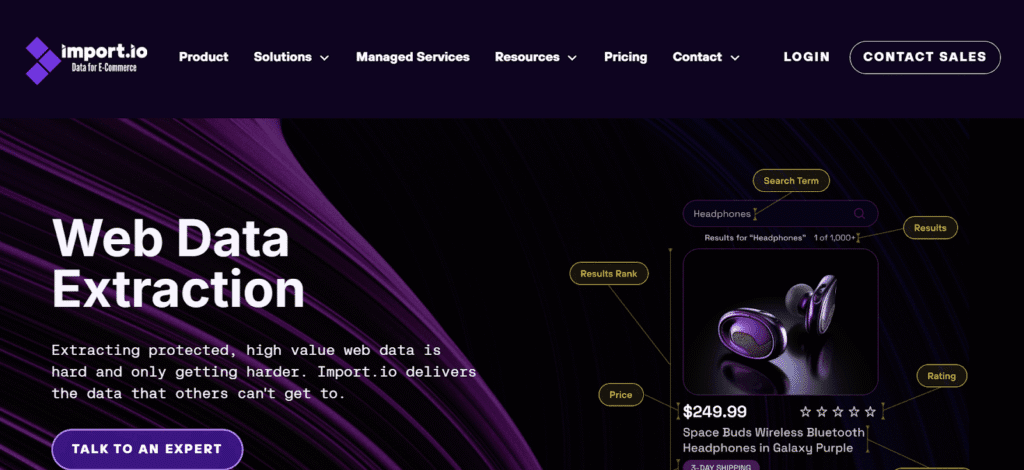
Key Features
- Visual Extraction Builder: Create scrapers visually with drag-and-drop and point-and-click.
- Advanced Data Processing: Includes features for cleaning, normalizing, and transforming data.
- Automation and Scheduling: Supports task automation and regular data refreshes.
- Enterprise-Ready Security: Provides secure cloud storage and access control.
- API and Integrations: REST APIs and connectors for seamless data delivery to other systems.
Pros
- Strong data preparation and automation tools included.
- Handles complex data extraction needs reliably.
- Enterprise-level security and compliance built in.
- Flexible integration with business systems.
Cons
- More suited to advanced or enterprise users.
- Pricing is higher compared to simpler tools.
- Requires some time to learn all the features.
Challenges of Using No-Code Web Scrapers
- Frequent Website Structure Changes: No-Code scrapers commonly break when a website changes its layout or updates elements, which means the data flows can suddenly stop working.
- Struggles with Dynamic and JavaScript Content: Many no-code tools have trouble extracting data from sites that load information dynamically or rely on JavaScript, so they might miss important details.
- Limited Customization Options: Most no-code scrapers offer only a fixed set of features, making it hard to handle custom logic or special site behaviors.
- Challengers with Anti-bot Protection: Sites often use protection like CAPTCHA or block repetitive traffic, and no-code tools may not be able to overcome these blocks reliably.
- Data Quality and Cleaning Needs: Data gathering may need extra cleaning because formats vary and errors often slip in, which adds manual work after scraping.
Conclusion
No-code web scrapers have made collecting data from websites easier for everyone, not just programmers. They can save time and simplify work for research, business, or personal projects. While powerful, these tools are not perfect and can run into trouble when websites change often or use advanced protection. Staying aware of these limits and picking a tool that matches your real needs helps avoid frustration. Good results come from regular checks and knowing when to adjust your approach.
Check out our other blogs for more such informative content:
FAQs
No-code tools rely heavily on stable page structures. For frequently changing sites, you may need to update workflows regularly or switch to tools that offer AI-assisted element detection or more advanced selectors.
Using rotating residential proxies and respecting the site’s request limits helps reduce blocking. Some tools also include CAPTCHA solving and behavior simulation to mimic human browsing.
Yes, many no-code scrapers provide APIs or built-in integrations with apps like Google Sheets, Zapier, or data visualization tools to automate data flow.
A combination of built-in cleaning tools, custom scripts, or external data processing platforms is often needed. Validation should include checking for duplicates, formatting errors, and missing values.

